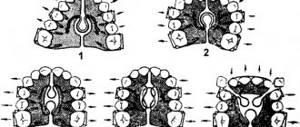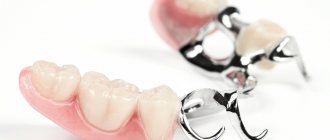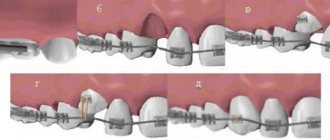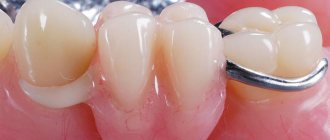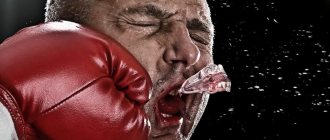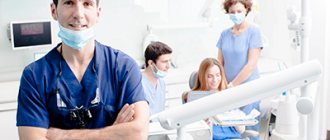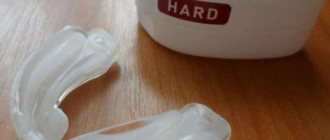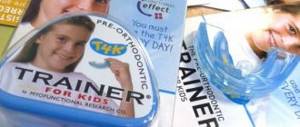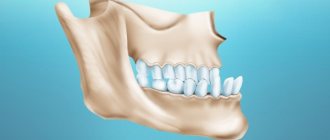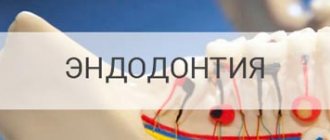The problems that can be solved in a modern dental clinic are very wide: toothache, missing teeth, malocclusion, oral diseases. The doctors of our clinics will be able to offer you several options for solving any problem. In this way, our main goal is achieved - quality treatment at reasonable prices.
In addition, thanks to constantly updated promotions and special offers, you can receive high-quality services on special terms that will undoubtedly delight you.
Orthodontic devices
Orthodontic problems are not uncommon in our country today. To eliminate them, many techniques and devices have been developed. The design of any orthodontic device is based on the combined action of active, functional and supporting elements. It is their different combination that determines the operating principles of a particular device.
Classification of orthodontic appliances according to their operating principle.
Mechanically acting
Their action is ensured by sets of ligatures, arches, braces, bandages, etc., which are attached to the teeth. The most common device of this type is the Angle arc; the Manchon, Eisworth and others are also known.
The principle of operation of such devices is that a metal arc, using a whole set of components, is attached to the teeth and begins to put pressure on them, ensuring their gradual movement to the desired position.
Depending on the purpose for which the arches are intended, they can be sliding or springy.
Functionally active
These structures are sometimes called guides. Their action lies in the fact that with the help of special bite plates, pelota and other devices, the action of the muscles located in the oral cavity is directed in the desired direction.
The devices can be removable or non-removable, and they operate in intermittent mode.
Combined action
The devices combine the simultaneous action of mechanical and functional devices.
Advantages and disadvantages of removable orthodontic plates
The advantages of dental alignment plates are:
- hypoallergenic materials;
- quick adaptation - after 3-4 days of wearing the described devices, the patient ceases to feel them in the mouth, which minimizes discomfort;
- the ability to remove records during the day;
- treatment effectiveness;
- affordable price;
- the ability to remove the device while eating;
- good dental care due to the fact that the device can be removed.
Negative aspects of treatment include:
- Pronounced effectiveness only in childhood and adolescence. When the jaw is formed, it is no longer possible to align the dentition with the help of simple plates.
- Change in speech sound while wearing. You need to be prepared for problems with diction, which are a normal side effect of having a foreign body in the mouth.
- The wearing of records by children, as a rule, is not always regulated by adults, because this device is removable, a child can take it off at any time, forget to put it on, or lose it.
Orthodontists at the Shifa clinic point out that effective treatment with plates requires high discipline on the part of the patient. To successfully straighten your bite, you need to wear devices as prescribed by your doctor. The duration of use of the plates throughout the day can vary from 3 to 24 hours.
Classification of orthodontic appliances by site of action
Extraoral. These include face bows and retention devices.
Face bows consist of three parts. The first, intraoral, is attached to the teeth. Two extraoral zones follow the shape of the head and end in hooks that provide extraoral traction. All parts are welded together. Cervical traction can be combined, high or cervical. The features of the devices depend on the diagnosis of the patients.
Intraoral
They in turn are divided into:
- single jawed,
- single-jaw intermaxillary action,
- two-jawed.
From their names it is clear where the devices are attached and in which direction they operate.
Designs for 2 jaws
Such devices are used for mutual movement of dentition in diametrically opposite directions, less often to strengthen the fulcrum, when the entire dentition of one jaw is used as a support. The big advantage of intraoral appliances over extraoral ones is that they are less noticeable and can be used day or night.
Combined devices consist of intraoral and extraoral parts. A head cap with hooks serves as a support for such devices. Consequently, the entire skull and neck are the support for extraoral and combined apparatuses. It is quite natural that such designs of orthodontic appliances can be used mainly at night or in a hospital setting. They are more bulky and less comfortable for the patient than intraoral devices.
Classification of orthodontic appliances by place of support
Reciprocal devices.
Reciprocal support allows you to use the counterforce simultaneously to fix the apparatus and move the teeth.
Stationary supports (teeth displacement is not allowed).
To select the right support, the doctor determines the diagnosis, taking into account not only the condition of the jaw, bite and number of teeth, but also the general health of the patient. Correctly selected support allows you to completely eliminate any orthodontic defects.
Possible options
After determining the type of pathology and the degree of its development, the patient is faced with the choice of using one of the possible devices.
Maxillary
When increasing the size of the upper jaw, it is recommended to use the following devices:
- Coffin spring system
It is a plastic base to which springs (double or single) are attached, in the shape of a circle, oval or S-shaped bend. Two fixing processes go to this structure. The size of the spring is determined by its type: a single spring is made from wires with a diameter of 0.8-1.5 mm, and a double one - 08.09 in the outer bend and 0.6-0.7 in the inner bend. The length for any type is the same - from 70 to 80 mm. The mechanism itself uses a springy property that allows the defect to be gradually corrected. The design is used at all stages of tooth development - milk, replacement and permanent. The main task is to expand the upper jaw arch. It is also used for shifts in the mesio-distal direction. In this case, the device should be placed with the more open part towards the rear.
If you need to enlarge the jaw in the lateral parts, a device with a double spring is used. It has activation features - approximately once every two weeks using spring extension.
- Devices with standard screw
This is also a kind of plate base, but there are no springs. They are replaced by a screw. If expansion of an entire jaw row is required, it is installed along the palate, and the necessary cutting is also made. In order for the elongation to occur smoothly, the device should be positioned at a right angle. For this purpose, secreted screws are installed at the fangs. The cut in this case is performed either perpendicularly or sectorally.
- Fan screw plates
This device is used much less frequently. Used to smoothly expand the anterior part of the jaw. If stretching is necessary for the entire length, symmetrical screws are used; if only on one side, asymmetrical screws are used.
Mandibular
The design that is used to lengthen the lower jaw is clearly different from the previous ones.
- With Koller spring
There are two types of these devices - for asymmetrical and symmetrical changes. The first design includes an arch that is located under the tongue. Two semicircular springs are attached to it, and two semicircular processes extend from them. In the second case, the basis of the structure remains the same, but has additions in the form of five springs in the shape of a semicircle (replacing the previous two). Let's look at the numbers: to produce the mechanism, wire 1.3-1.4 cm in length and 1.0-1.2 mm in diameter is used. Its curve is individual for everyone - so that when wearing it the frenulum of the tongue does not get affected. The size of the bends should not be more than 8.0 mm. The boundaries of the spring extend beyond the base, so there is no need to cover them with plastic. After this, the end of the wire is bent in the shape of a wave and passes next to the alveoli. The base itself should not reach the wire by 0.8-1.0 mm. If there are additional indications, the spring can be additionally bent into bends with a step width of 3.0-4.0 mm and up to 8.0 mm in length. They can be adjusted.
- With screw
This mechanism is used for installation above the lingual frenulum (in this case the cut is made vertically). If expansion of the lower jaw is required, two screws are attached to the apparatus and two vertical cuts are made. Their location depends on the fangs.
It is up to the doctor to decide which of the presented devices will be installed when correcting the bite. This is influenced by the neglect of the case, the condition of the teeth and tissues. Parameters such as duration of use of the structure and pressure force are calculated for each patient individually.
Retention orthodontic equipment – retainers
Retainers are needed
to keep teeth in their new place after orthodontic treatment. It is impossible not to wear a retainer, otherwise a relapse will occur. We use various types of retention devices or combinations thereof at the discretion of the treating orthodontist
- Retention plates
are removable retention devices in the form of an orthodontic plate with a plastic base and wire clasps. Made individually in the laboratory. Worn by the patient at night. Can be used in combination with a permanent retainer.
- Retention aligners
are removable biopolymer aligners that repeat the impression of the patient’s teeth immediately after completion of orthodontic treatment. Retention guards are made individually for the patient. The patient must wear the aligners every night or according to a specific pattern.
- Fixed retainers
are a thin wire that the orthodontist fixes with special glue on the inner - lingual surface of the front six teeth on the upper and lower jaw.
You will have to wear such a retainer for quite a long time - we generally recommend that our patients wear a retainer for life, but it is invisible and is not felt by the patient .
To learn more about orthodontic treatment at the GALA DENT clinic, book a consultation with our orthodontists and take advantage of all the benefits available to our patients.
Share:
Make an appointment
Expected Result
Combined-action devices for orthodontic treatment have proven in practice to be highly effective. The greatest effectiveness was noted when eliminating anomalies in childhood, during the period of replacement of milk teeth with permanent elements. Teeth displacement with the device can also be achieved in adolescents aged 14-16 years.
With a fully formed dental system, it is difficult to achieve the desired results. In such situations, doctors recommend preliminary surgical treatment, and only after successful treatment, install an orthodontic device.
The “fruits” of the correction can be observed after 30 days of constant wearing of the device. Experts note 100% success in jaw expansion if you follow the activation mode of the screw mechanism:
- according to the method of breaking the palatal suture - every 2 days (the jaw expands after 2 months, long-term retention, there is a risk of poor healing of the suture);
- slow technique - once every 4 days (very high-quality expansion).
The main thing in orthodontic treatment is to instill in the child the motivation to undergo treatment and scrupulously follow the rules of wearing the device.
Main characteristics
Orthodontic treatment involves influencing the patient’s dental system. The Khurgina apparatus acts in combination , causing morphological changes and restoring normal functioning:
- Expansion of the upper jaw or inhibition of its excessive development. Changes occur in the distal plane.
The jaw expands due to the activation of a helical element, which, when rotated, pushes the two parts of the base apart in a given direction. The Katz element, on the contrary, blocks further development of the jaw. The position of the front incisors is eliminated due to clasps, which pull them in the oral direction, leveling the angle of extension and restraining the development of the dental arch. - Stimulation of the growth of the movable jaw. The front teeth of the lower row are in close contact with the surface of the inclined platform. The emphasis creates pressure that forces them to lean forward.
- Activation of vertical growth of dentoalveolar processes in the chewing areas. This occurs due to the displacement of the bite by an inclined plane.
- Dentoalveolar reduction of the frontal part of the movable jaw. The changes are caused by the action of an inclined plane, which presses the anterior units deeper into the alveoli.
- Alignment of maxillary teeth that are too bent forward with flip hooks that pull the units back when the jaws are at rest.
- Correction of the oral position (inward of the dental arch) of the frontal mandibular units under the pressure of an inclined plane. The force of the structural element on the teeth decreases as they move. It is regulated by applying a polymer pad to the surface.
Why is the Twin Block device considered a comfortable treatment system for occlusion in adolescents?
This publication contains all the most important things about the Dilyar mask.
Here https://orto-info.ru/sistemyi-vyiravnivaniya-zubov/lechebno-profilakticheskie-apparatyi/ortotik-kakie-zadachi-reshayut.html we’ll talk about the effectiveness of treating TMJ with an orthotic.
Rules and terms of wearing
The device is activated by the orthodontist once every 5-7 days. The pressure of the bite plane is adjusted once every 14-20 days by applying a layer of acrylic mass to its surface.
The structure may only be removed for eating and hygienic care. After each cleaning of the teeth and oral cavity, it is recommended to clean the device itself.
The duration of correction depends on the severity of the anomaly and the complexity of the clinical case. Minor changes in the dental system take an average of 6-18 months to correct.
After completing the phase of active influence on problem areas, a period of retention begins (consolidation of results), which lasts 3-6 months.
